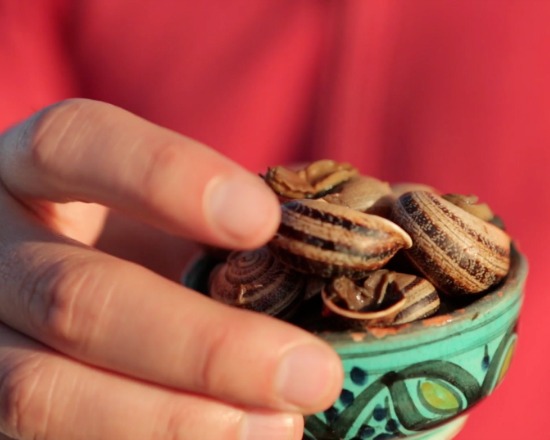Lauren Wilson: Once I watch one, I watch six more — Perennial Plate‘s videos are irresistible for anyone who is mildly interested in food. Most recently, they’ve been posting about steaming tagines, radiant spice markets and fresh mint tea in Morocco… a welcomed escape from November in New York.
Carrington Morris: Evolutionaries—HeritageRadioNetwork.org
Starting this past April, the “most progressive voice for food and culture radio in America” has been interviewing food visionaries, luminaries and pioneers and delivering the inside scoop in the subjects’ own words in 25-minute segments. Among those featured to date: Wylie Dufresne, Joan Gussow, Harold McGee, Marion Nestle, Steve Jenkins, Alice Waters and, most recently, renowned deli entrepreneur Ari Weinzweig of Zingerman’s, whose innovative food-business model allows for both heart and profit.
Gabrielle Langholtz: Coffee Maker Cooking: Brew Up Your Next Dinner — NPR
When I worked in the Greenmarket office, there was a rule: no fish in the toaster oven. I broke it often. But I never hacked a coffee maker to poach salmon. After reading this, I will.
Eileen M. Duffy: Americans: Why Do You Keep Refrigerating Your Eggs? — io9
It’s kind of like the ’90s when we found out, after buying plastic cutting boards, that there was a reason we used wood. It neutralized bacteria. Now, guess what? Washing eggs removes a natural barrier that keeps out potentially deadly bugs. An egg just pulled from under a chicken is more protected than one washed, scrubbed and bleached by a major producer.
Betsy Davidson: The Big Oyster: History on the Half Shell — Mark Kurlansky
Still in the throes of oystermania (read our upcoming winter issue), I am reading (revisiting, actually) Mark Kurlansky’s The Big Oyster: History on the Half Shell. Late 19th century New York City wasn’t always pretty (think, The Gangs of New York), but you sure could get plenty of oysters; fresh and cheap. Added bonus, there are plenty of recipes. Raw, pickled, steamed, stewed, fried, roasted or scalloped… New Yorkers loved their oysters (still do).
Amy Zavatto: Pinot Noir in a Can Launched — The Drinks Business
Flip tops with your turkey? Nope, beer is not the topic here — I’m talking wine in a can. The knee-jerk reaction to this is, of course, to guffaw at such impropriety (admittedly, I think I did, quite literally, make some guttural noise of disapproval when I read this initially), but the more I think about it, the more I wonder: Well, is this just part of the same exact debate that wages on between corks v. screwcaps, and bag-in-box v. bottles? The cans of Pinot Noir (gasp!) and Pinot Gris are coming from Oregon’s Union Wine Company, a seemingly anti-Portlandia outfit hell-bent on making Oregon wines that folks can actually afford without considering skipping subsequent meals. I haven’t tried any of their wines, let alone these in the can, but you know what? I would. Packaging is a massive chunk of the residual carbon footprint of shipping vino, so if the quality remains the same in the glass (the fact of the matter is, like, 80% of wines are made to drink soon and not cellar for the ages, anyway) but the package is lighter on the truck? Bring it.
Brian Halweil: Imagining the Post Antibiotics Future — Food & Environment Reporting Network
Maryn McKenna, author of Superbug: The Fatal Menace of MRSA, gives us a stark glimpse at a future where more people could die of once treatable infections thanks go mounting antibiotic resistance. How could such a resistance become so widespread? An excess of antibiotics in the food supply is one major reason, she argues.
Marissa Finn: Vegetarian Too Young — NY Times
At what age is it acceptable to allow your child to be vegetarian?



